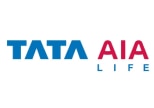5 Best Monthly Savings Schemes In India
Table of Contents
Investing in savings schemes can also help fund the education and marriage of the individual’s children. Apart from it being a disciplined way of saving money, investing in such schemes can also provide additional income. There are also various small savings schemes, where the contribution is less, but the total contribution that has been accumulated over the long-run will be large.

Best Monthly Savings Scheme Available
1. Tax Saving FDs
Tax saving FDs carry a deduction under Section 80 C of the Income Tax Act for investment up to Rs 1.5 lakhs per annum. For example, if you invest Rs 1 lakh in a tax saving FD and you are in the 20% tax slab, you will save Rs 20,000 in tax (20% of Rs 1 lakh). These FDs have a minimum lock-in period of 5 years and can be opened through any public or private sector bank or post office. The interest earned through tax saver FDs is taxable at your slab rate. It is a suitable investment option for those who are looking for guaranteed returns and low risk. The minimum investment in tax saving FDs is Rs 100. There is no maximum limit but tax deduction is only available for contributions up to Rs 1.5 lakh per year.
2. Unit Linked Insurance Plan (ULIP)
A Unit Linked Insurance Plan (ULIP) is an integrated plan which offers life insurance cover and investment through a single scheme. Investment in ULIPs is tax deductible under Section 80 C up to Rs 1.5 lakh per annum and the maturity proceeds of a ULIP are also exempt under Section 10(10)(D). ULIPs specify a life insurance cover (usually around 10 times your annual premium) and they allow you to choose ULIP funds which invest in equities and/or debt and function very similarly to mutual funds. The minimum annual investment varies from fund to fund but is usually set at Rs 2,500. There is no maximum limit but tax deduction is only available for contributions up to Rs 1.5 lakh per year.
3. Equity Linked Savings Scheme (ELSS)
ELSS or Equity Linked Savings Scheme is a type of mutual fund. ELSS Funds have a lock-in of 3 years, which is the shortest lock-in among the various tax-saving schemes in India. Investing in ELSS Funds (also called Tax Saving Funds) is tax deductible under Section 80 C up to Rs 1.5 lakh per annum. The returns on ELSS funds will be taxed as long term capital gains at a 10% rate. Dividends from ELSS funds will also be taxed at 10% under the Dividend Distribution Tax. ELSS funds invest at least 80% of their assets in equity (stocks) and offer a high compounding potential in the long term. You can know more about them here. The minimum annual investment in ELSS funds is Rs 100, although it varies from one fund to another. There is no maximum limit but tax deduction is only available for contributions up to Rs 1.5 lakh per year.
4. Public Provident Fund (PPF)
The Public Provident Fund (PPF) has an interest rate of 7.1%. It has a term of 15 years, which can be extended indefinitely in blocks of 5 years. The interest on the PPF is tax free and contributions to the PPF are tax deductible up to Rs 1.5 lakh per annum under Section 80C of the Income Tax Act, 1961. You can open a PPF account with a bank or a post office. Some banks like ICICI and Axis also allow you to open PPF accounts online. You can make partial withdrawals from the expiry of 5 years from the year in which the account is opened. Loan facility is available as well but from the third year. The minimum investment amount per year is Rs 500 and the maximum investment amount per year is Rs 1.5 lakh.
5. National Savings Certificates (NSC)
This certificate offers an interest rate of 6.8% compounded annually but payable only at maturity. It can be purchased from any post office. The minimum investment is Rs 100 and there is no maximum limit. The tenure for this certificate is 5 years. The interest earned is deemed to be reinvested and eligible for tax deduction up to Rs 1.5 lakh under Section 80 C. The principal amount invested also counts towards the same tax deduction up to Rs 1.5 lakh. The current issue is called the NSC VIII Issue.
Conclusion
The savings schemes are safe investment instruments that enable applicants to meet long-term financial goals like a child's higher education, child’s marriage, retirement plan, etc. The government offers a wide range of saving schemes to cater to the varied needs and financial goals of Indians citizens across different sections of the society. For instance, Sukanya Samriddhi Yojana focuses on the financial support for the girl child, while Pradhan Matri Jan Dhan Yojana is especially designed for citizens below the poverty line.
Also read- Best Investment Plans In India
Learn Everything About Post Office Savings Schemes
Disclaimer: This article is issued in the general public interest and meant for general information purposes only. Readers are advised not to rely on the contents of the article as conclusive in nature and should research further or consult an expert in this regard.









































